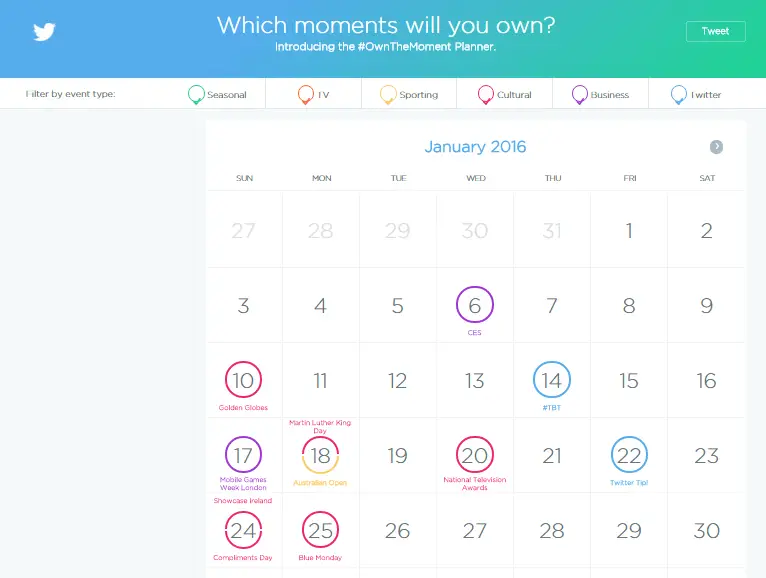The power of newsbreaks: how to use events and trends in content marketing

“Today is not just a day, it’s a holiday” – and it’s a reason to adopt a specific marketing strategy in order to get attention from the largest audience possible. This approach is called situational marketing.
Creating content in a hyper-crowded information space is difficult. The amount of information that is processed by professionals working with online media, exceeds ten times the volume consumed by ordinary users. A routine part of the job is to find newsbreaks, which can become the basis for integrating branded content, as well as filtering information by choosing events that are quite popular.
What is situational marketing:
When we talk about situational marketing for companies we don’t only mean memes. Although meme mechanics are very similar to the approach described in this article. Brand-related memes are usually the result of a mistake, and rarely ever are used in a planned campaign launch.
A more relevant example of situational marketing, without any tricks or secret techniques, is the recent premiere of Star Wars Episode 7. Here are just a few case studies of well-known brands which successfully used this event:
One popular method of situational marketing is newsjacking, but this approach only works with hot new trends rather than lesser, repetitive events like festivals, local and global events.
These events occur with some frequency and with the right approach are fairly easy to predict. You can look at Google Trends and see what went crazy on the internet in the past year: a movie-premiere, politics, holidays – all of these things are an opportunity to hop on the bandwagon and bring your branded content to a wider audience without spending a dime on advertising.
Next, we are going to describe in detail the two components of situational marketing, which differ from each other by their predictability – sudden trends and planned events.
Sudden trends
Hashtags, strange phrases, and crazy challenges pop up on users’ news feeds – this is the result of more and more people getting involved with the new trends online.
These trends are an opportunity for people to join in on the fun, but for others, it’s for the sake of profit. The latter refers to us. The tactic of using brand new information means:
It’s important to discover trends before they become too mainstream. Not too early, but not too late, when the trend is already getting annoying to everyone.
Express preparing of content – want to brief an agency? And approve creative you’ve got with all the departments? Too late. While you are dealing with it, people will like, share, and forget. With virtual newsbreak you don’t have to waste time looking for trends – a key success factor.
Distribution – a trend is identified over time with the content created about it. It’s good if you can have a community of a couple of hundreds of thousands of subscribers – you can post the results of your work and to see how it spreads among the target audience. Don’t have any subscribers? No problem – go to the leaders of the trend and post your content there. It is very simple: the more time invested at the start, the more likely it is that your content will get picked up quickly and spread like wildfire on the web.
Predictable events
These newsbreaks can serve as a good foundation for building creativity. Most importantly – you can plan for them in advance which allows you to thoroughly prepare.
Next is a list of event categories which occur regularly and could be potentially interesting content for marketers:
Holidays & Events – the most predictable event category, but also the most boring. The global demand for holidays grows naturally, all you have to do is use your creativity to break through all the information noise and get to your audience before your competitors do.
International holidays (New Years, Valentine’s Day), or local (Fatherland Defender’s Day, Mardi Gras, Constitution Day) – an opportunity to focus marketing efforts on the preparation of the communication relevant for upcoming holiday. It can be divided into several stages – pre, during, and post holiday. The most important is pre holiday and you should spend a few weeks promoting during this time. Once you get closer to the holiday, stimulate the interest of your audience with relevant information and entertaining content.
There are also less popular holidays, but they are no less useful for advertising purposes – International Hug Day, International day without the Internet, the World Day of knitting in public – they are 80% ready, just add graphics and text, then publish.
Local events – the first snowfall? An organized city festival? Use this information for your own purposes. From the basic message to a more detailed integration of the event – use your available resources and act! Such occasions are highly competitive, and to reach out to the specific audience is not easy.
To find events in this category, search city websites and local media. Plan a time to publish these notification and events on a monthly content plan.
Show business – here there is a ton of material for newsbreaks: Leonardo DiCaprio once again did not win the “Oscar”, Marty McFly “arrives” in 2015 – many companies only take advantage of a small part of this kind of viral media. To be one of the first – find last year’s big events and trends so you don’t have to come up with content “on the fly”, you will just adapt your prepared draft once it gets closer to the event.
Days from history – well-known personalities who were born on this day, funny events of the past years, scientific and geographical discoveries – most of these events can be used as an everyday communication tool for your audience.
Sporting Event – the biggest event in this category is the «Super Bowl». This is very popular content among top marketers. One second of video broadcast during the Super Bowl costs 117,000 dollars. But if you aren’t one of the big power players, you can still use this event in your marketing by generating content and distributing it through your own channels. Also don’t forget about local sport events.
How to organize the process of finding trends and working with newsbreak:
If you do brand marketing with a six-figure budget, you can use the services of a specialized agency to trend watch for you. With this time, you will be able to draw beautiful graphics and charts to show the shareholders.
If the budget is 0, don’t worry. It is still possible to establish a process within your team to detect events quickly and get your content out to your audience right away. In this case, part of your team’s time will need to be used to search for and select trends. Your colleagues will most likely be glad to do so.
To help small, in- house teams there are tools such as RSS-readers and content templates available to customize. All which will greatly assist trend watchers (Alltop, Trend Hunters)
One strategy is to partially automate the process by using different web services. This reduces the flow of information and makes it doable for even just one person to be in charge of it.
If there is a minimal budget, track events using social networks (Twitter Own The Moment), and use a free monitoring system (Google Alerts) to search for newsbreaks.
If you have a budget of tens of dollars, use a content-calendar which automatically tells you all the important events and trends through PromoRepublic’s service.
Here you can create content in just a couple of minutes with the help of templates for different newsbreaks:
If you have more than a few tens of dollars, try Spike and BuzzSumo.
Finally
Newsbreaks are an important component of content marketing. Tracking events using online tools and creating content for them can bring brand communication to the next level, while significantly saving time and money. Remember what is important for situational marketing – fast response, creative thinking, and effective tools.

local marketing tips monthly
Enterprise: for multi-location and direct selling brands. Manage thousands of social media pages of your local distributors, partners, or franchisees.
Agency: for marketing agencies. Manage all your clients’ social media pages on one platform.












